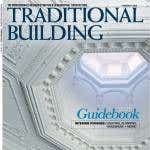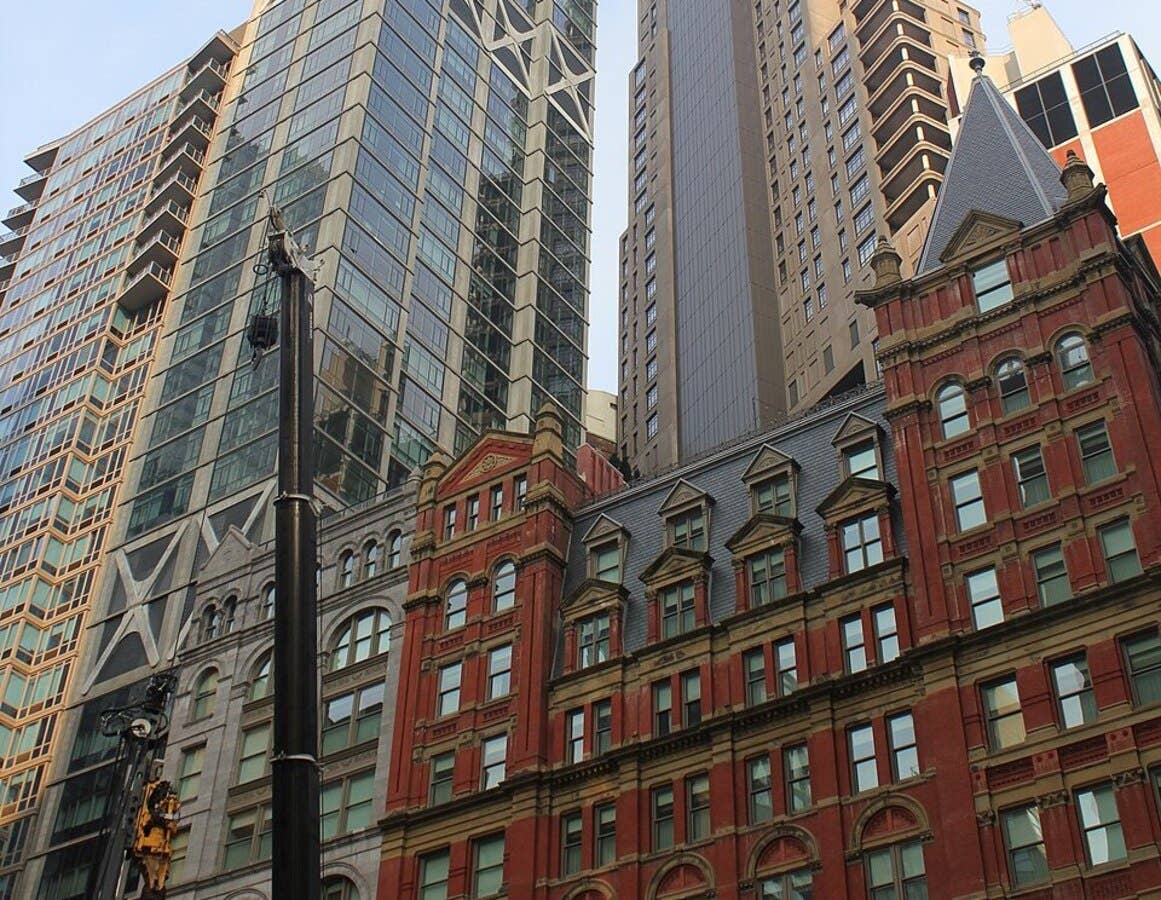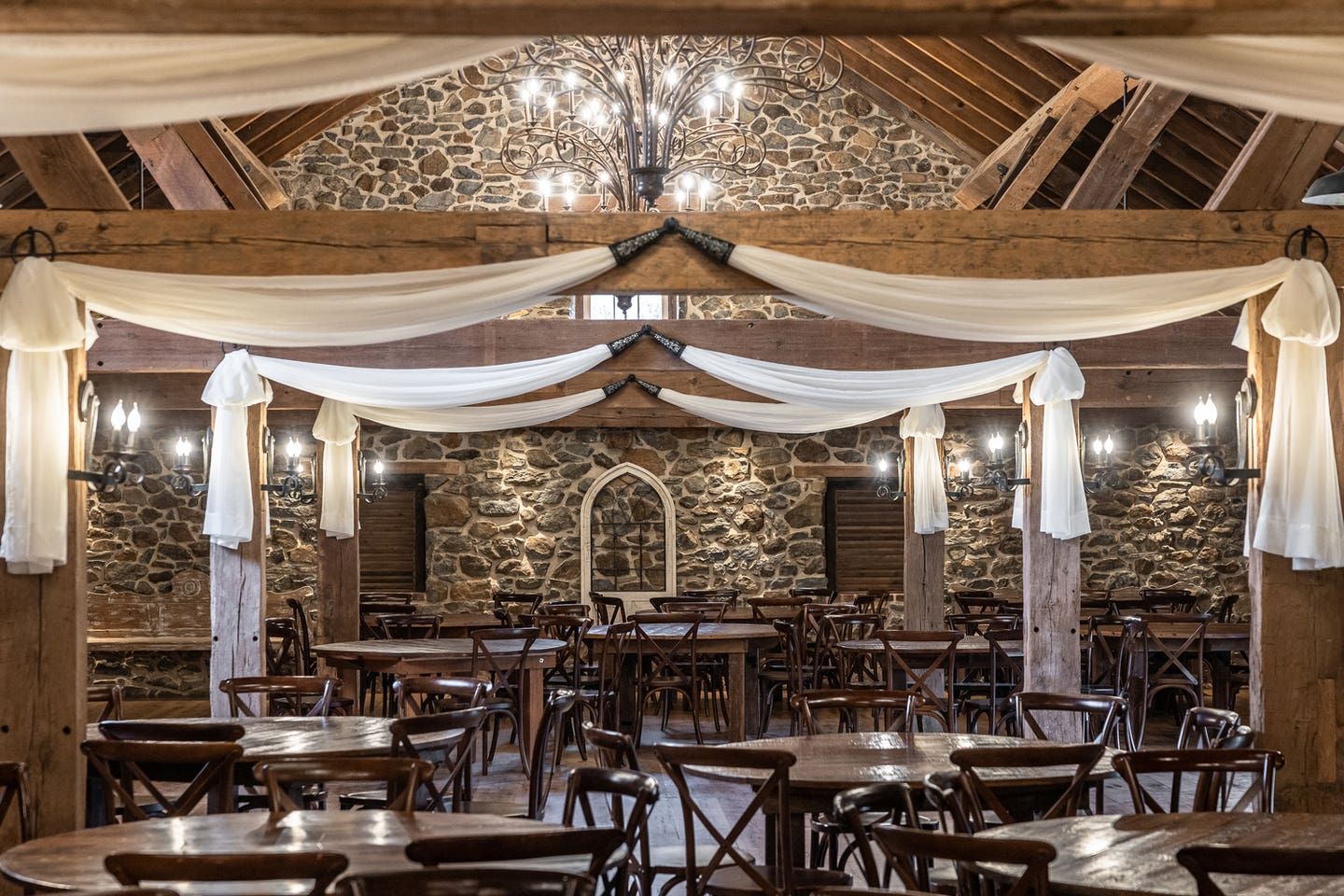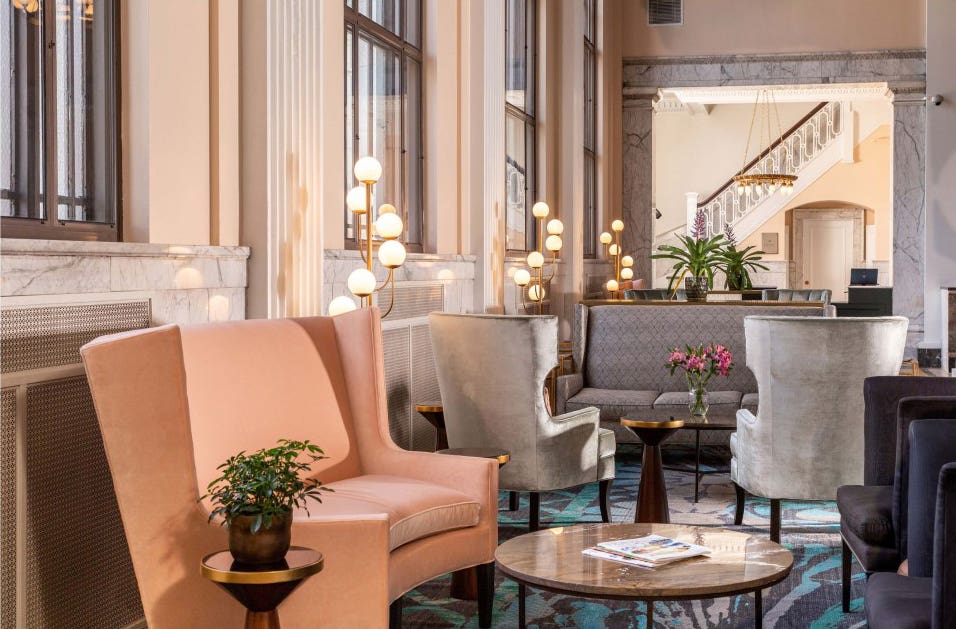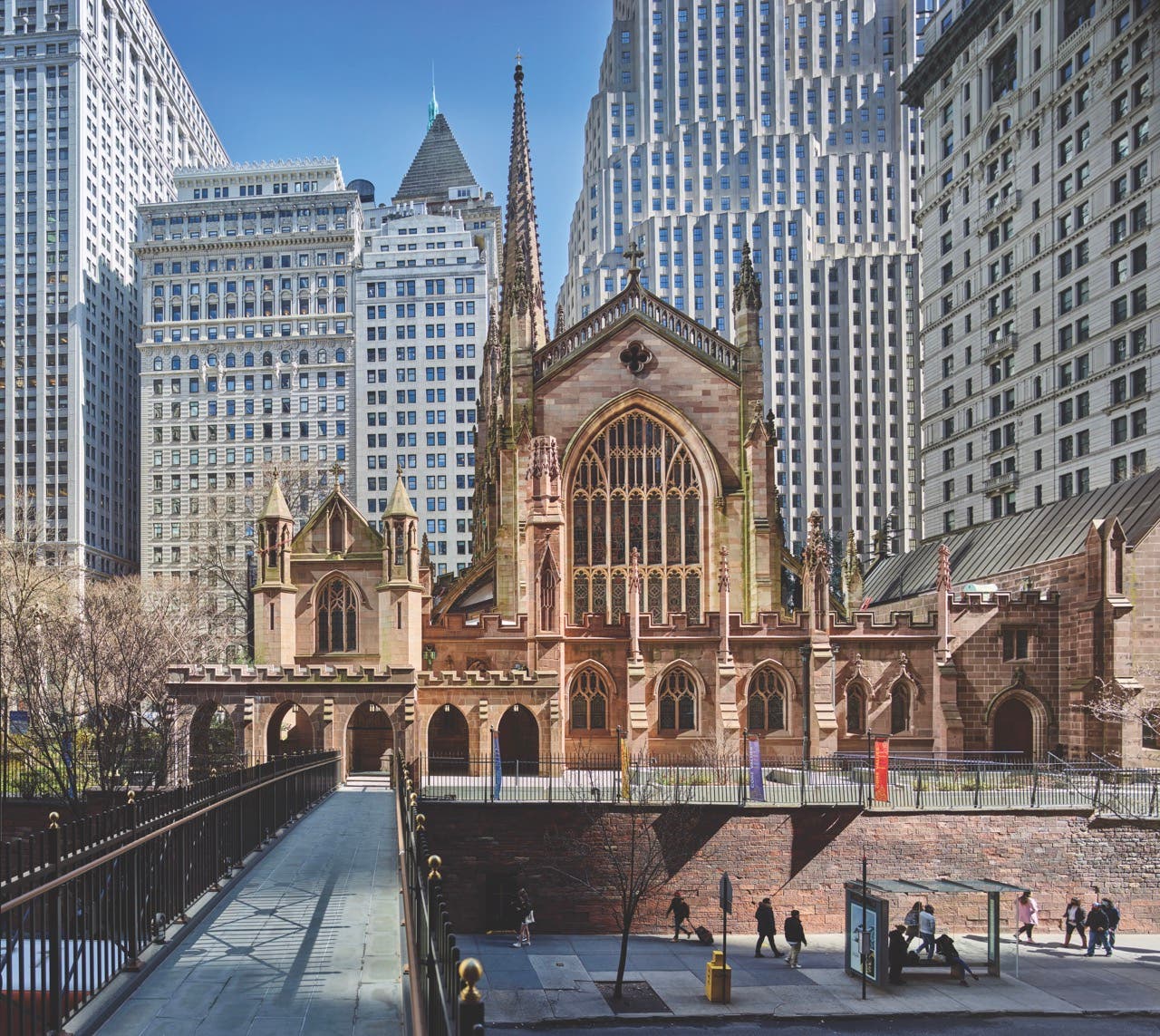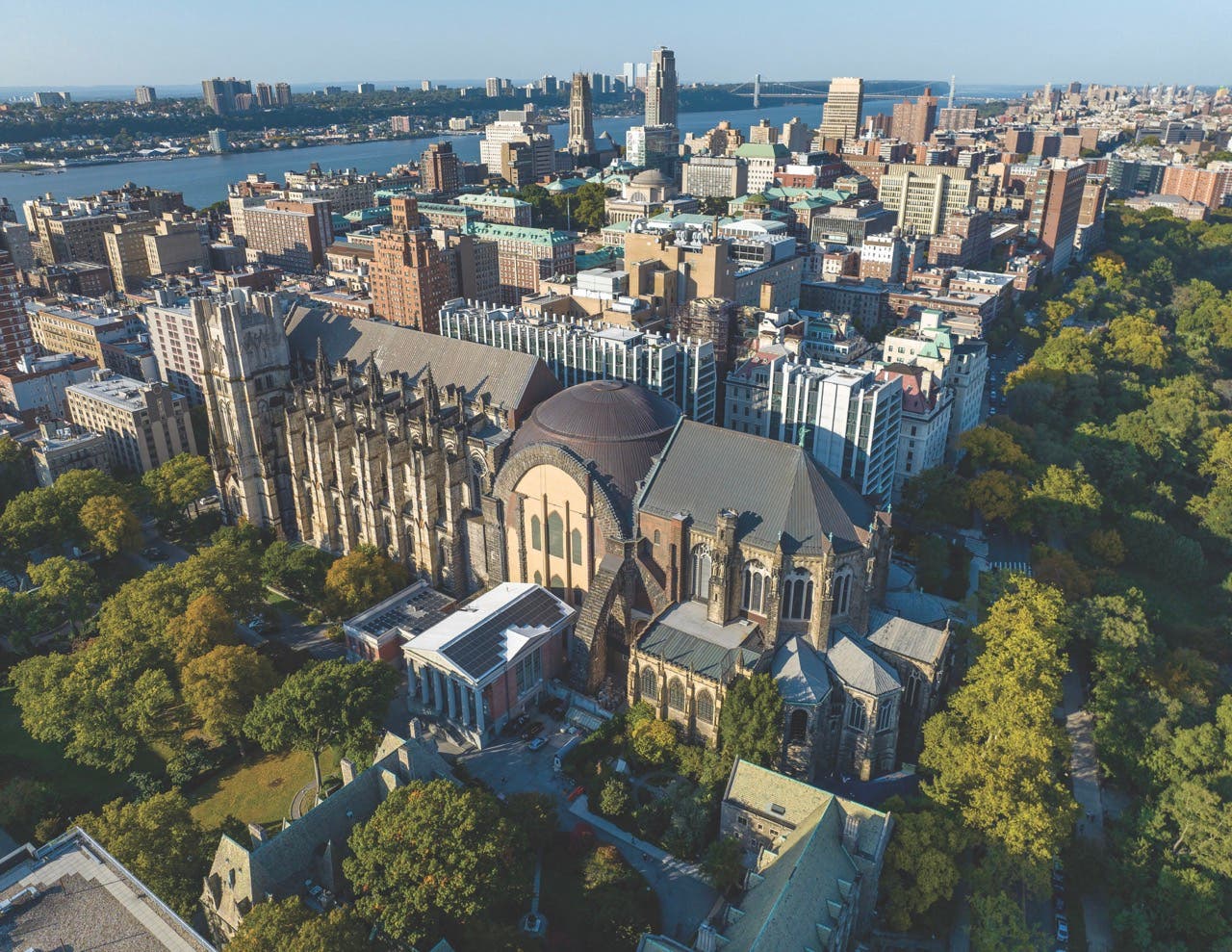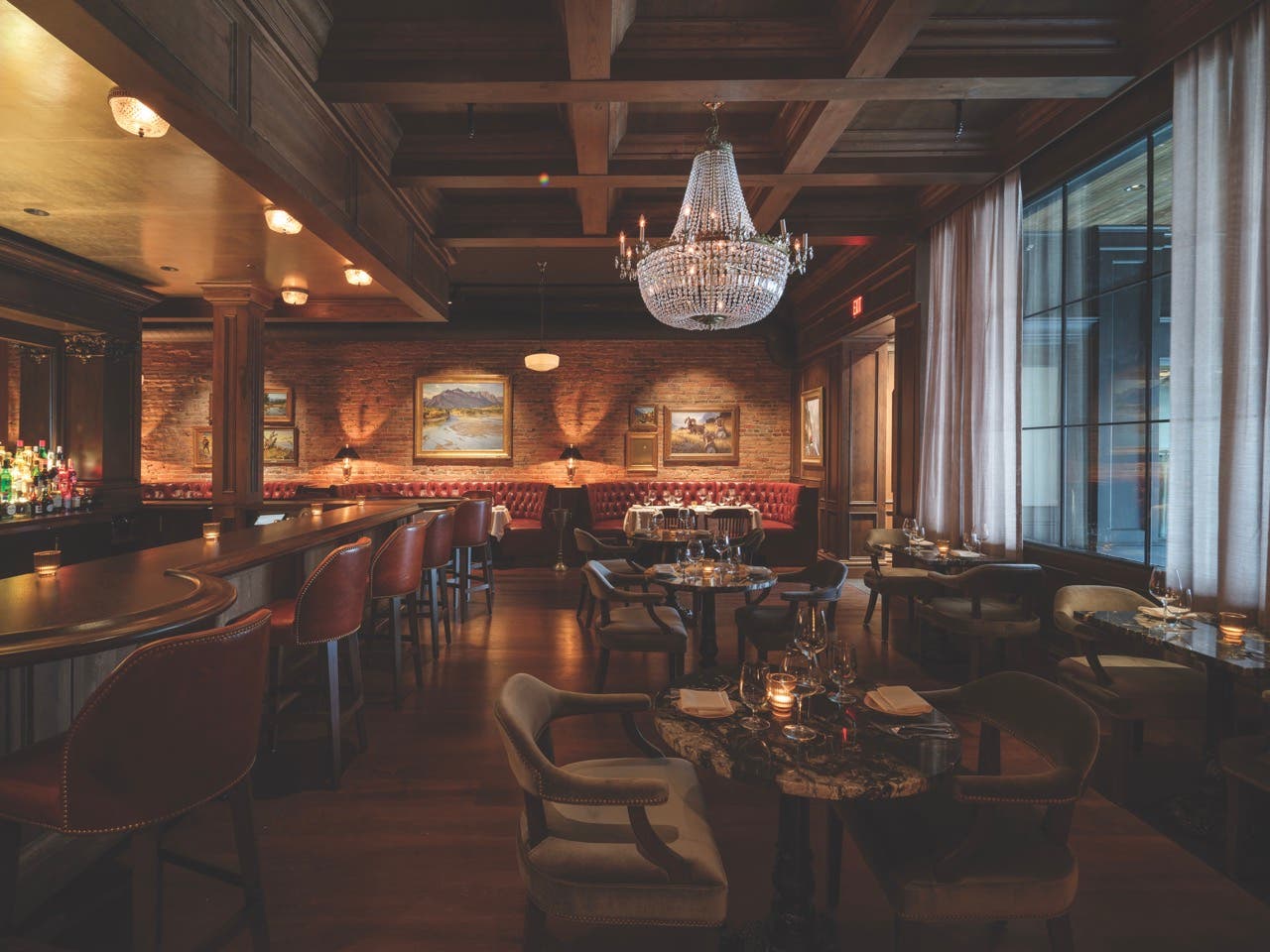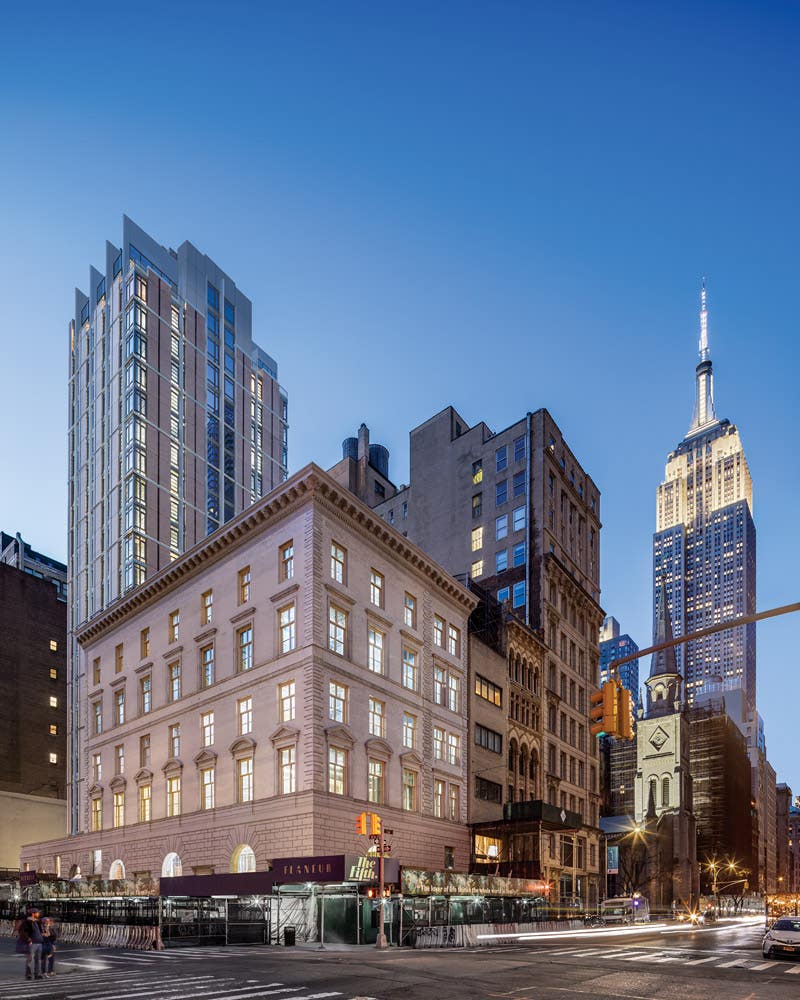
Restoration & Renovation
The Fifth Avenue Hotel
The most architecturally significant additions to historic buildings are those that seamlessly merge the best of their time periods yet allow each element to make a distinct statement.
By design, they don’t replicate their architectural past; instead, they use the sophistication and ingenuity of bygone eras as a springboard for creativity and innovation to reflect what went before yet anticipate what is yet to come in a prescient manner.
One of the latest illustrations of this principle is The Fifth Avenue Hotel, which is housed in one of New York City’s architectural gems.
A decade in the making, the hotel is the latest chapter in the landmarked building’s century-long history.
The original five-story McKim, Mead & White building, 250 Fifth Ave. at 28th Street in Manhattan’s chic NoMad neighborhood, was erected in 1907 for the Second National Bank.
In 1913, McKim, Mead & White designed a two-story addition on the north side, and in 1928, the firm also designed a commercial addition on the back of the building.
The fourth—and final—addition is the 230-foot-tall, ground-up building designed by the New York City-based firms Perkins Eastman and PBDW Architects as the premiere project of the hotel development and management company Flâneur Hospitality.
Flâneur Hospitality CEO and Founder Alex Ohebshalom, who is a principal of his family’s property-management company, which oversees a portfolio of more than 2,000 residential apartments and over 1 million square feet of office, industrial and retail space, including 250 Fifth Ave., envisioned the project as a way to honor and build upon the work of McKim, Mead & White.
“They were pioneers and innovators of their time—they traveled extensively through Europe and brought ingenious and audacious design ideas back with them,” he says, adding that his family has owned the building since 1978 and that most recently it was used as commercial and office space. “Like them, I take inspiration from both cultures and masterpieces the world over.”
Stanford White, the “White” of McKim, Mead & White, whom Ohebshalom calls the “quintessential flâneur, or urban wanderer,” was his main inspiration—not only for the hotel but also for the brand of his hospitality development and management company.
“I did a deep dive into Stanford White and unearthed images and news articles of his townhouse in Gramercy Park and his Box Hill estate in St. James on Long Island,” he says. “He had a collection of furniture, objects, and art from his travels that spanned countries, eras, and cultures.”
The Fifth Avenue Hotel project, which started in 2012 with a public hearing before the New York City Landmarks Preservation Commission, evolved over time.
PBDW Architects—whose consulting partner Samuel White is Stanford White’s great-grandson—was commissioned to explore the possibilities for the Gilded Age building, which was to be restored.
“Right from the beginning, the landmarks commission, which has been very supportive of the project, told us that building on top of the existing structure would not be considered by the Landmarks Preservation Commission,” says Matthew Mueller, AIA, partner at PBDW Architects. “And that if we did build on top of the two-story addition, we would not be able to add more than four or five stories over it.”
After extensive research, however, PBDW Architects discovered a 1911 New York Times article describing a proposal for a “tall loft building” on the site, and it was that, along with the fact that their own firm was at the time housed in a similar building near 250 Fifth Ave., that persuaded the commission to entertain proposals for a higher structure.
Ultimately, the architectural team decided to maintain and preserve the façade of the two-story addition and replace the building behind it with the new tower.
“We also excavated another floor below ground,” says Shawn Basler, AIA, co-CEO and executive director of Perkins Eastman.
Perkins Eastman, which came on board later, and PBDW Architects altered the tower’s design as circumstances changed.
The original buff-colored brick and limestone building, which has a terra-cotta cornice, was meticulously restored and its wood-frame windows were precisely replicated.
“We built a scaffold around it and let the brick dry out for a year,” says Basler. “And we matched the original mortar color.”
Ohebshalom added that the replacement terra cotta, from Gladding McBean, makes the 155 feet of the cornice look “gorgeous.”
The departure of the largest tenant —coincidentally, it was a bank like the building’s first resident—“changed the whole dynamic of the project and how we looked at the building,” Basler says. “It allowed us to create a streetscape and bring back the building’s original two-story banking hall space. It also allowed us to re-think the main entrance so we could add double-height windows with transoms.”
The new brick and metal tower, which steps back from the original building, clearly shows, Mueller says, that “additions can be complementary and contemporary.”
The thistledown color of the new brick, which, after many samples was intentionally chosen to play off the original tone instead of matching it, ties the two structures together.
“We took the proportion and composition of the windows and drew from them for inspiration to hark back to the materiality so the tower can stand on its own,” Mueller says. “But it doesn’t undermine the original building.”
Or, Basler adds, overwhelm it. “The hotel is a unique property—it blends new and old, and it has attention to detail from the interior to the exterior,” he says.
Ohebshalom says The Fifth Avenue Hotel represents “a unique approach to hospitality, one that provides guests the greatest luxury of our time: being present in the moment. The flâneur—someone who takes time to observe and enjoy the pleasures of life—is the inspiration behind our philosophy of mindful travel and personal hospitality.”
In keeping with that theme, The Fifth Avenue Hotel is made for luxury living in a grand style. It has 153 rooms—24 in The Mansion, which is the rebranded name of the original building, and 129 in The Tower.
In addition to a 5,000-square-foot ballroom with 22-foot ceilings, there’s a 2,500-square-foot private dining space, a signature multi-level restaurant on Fifth Avenue, a two-story library and study, an outdoor terrace and a fitness center with equipment from Technogym, Peloton, and Mirror.
The interiors, designed by Martin Brudnizki Design Studio, “are meant to evoke the home of a worldly explorer, captured through rich colors, textures, furnishings, and art as well as thoughtful accoutrements and one-of-a-kind finishes,” Ohebshalom says.
Mueller notes that the attention to historic detail and sensibility set The Fifth Avenue Hotel apart.
“Frequently owners care more about the addition than the landmark, but in this case, Alex cherished the landmark and restored it to its rightful glory,” he says. “It’s good for New York, good for the property, and for historic preservation.”
The Fifth Avenue Hotel, which may open as soon as the end of the year, “is a career high point for me,” Ohebshalom says. “We intend to own the property for the next 100 years, and creating The Fifth Avenue Hotel allowed us to optimize the asset while respecting its history and honoring New York City architecture.”
Key suppliers
Hotel Development & Management Co. Flâneur Hospitality
Design Architects Perkins Eastman and PBDW Architects
Architect of Record Perkins Eastman
Interior Design Martin Brudnizki Design Studio
Art VISTO Images
Landscaper Harrison Green
Façade Restoration Consultant Surface Design Group
Terra Cotta Gladding McBean


